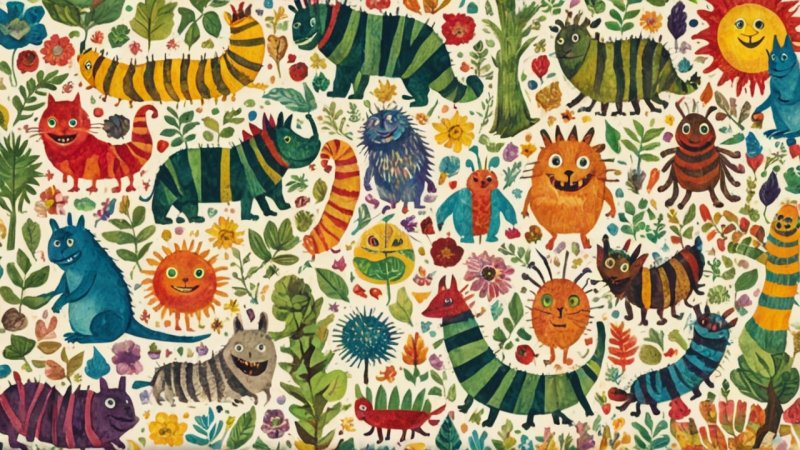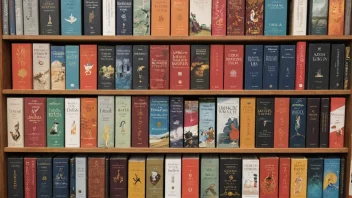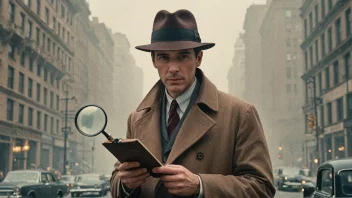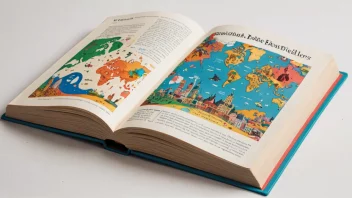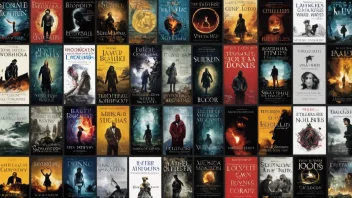Illustrated books have a special place in the hearts of young readers. They combine captivating stories with stunning visuals, creating an immersive reading experience that fosters a love for literature from an early age. In this article, we will compare two iconic children's books: Maurice Sendak's Where the Wild Things Are and Eric Carle's The Very Hungry Caterpillar. Both books are beloved classics, but they offer different experiences in terms of storytelling, art style, and themes. Let’s dive into the details.
Storyline and Themes
Where the Wild Things Are tells the story of Max, a young boy who sails away to an island inhabited by wild creatures. The book explores themes of imagination, emotion, and the desire for adventure while also touching on the importance of home and family. The journey Max undertakes allows readers to delve into the complexities of childhood emotions.
On the other hand, The Very Hungry Caterpillar follows the journey of a caterpillar as it eats its way through various foods before transforming into a beautiful butterfly. This book introduces themes of growth, change, and the life cycle of a butterfly, making it both educational and engaging for young readers.
Art Style
Both books are visually stunning, but they showcase very different artistic styles. Where the Wild Things Are features detailed illustrations that convey a sense of depth and emotion. Sendak’s art captures the wildness of the creatures and the whimsical nature of Max's adventure, drawing readers into a rich, imaginative world.
In contrast, The Very Hungry Caterpillar employs bold, colorful collages that are simple yet effective. Eric Carle’s distinctive technique of using hand-painted paper creates a vibrant visual experience. The artwork is interactive and engaging, perfect for capturing the attention of younger readers.
Target Audience
While both books cater to young readers, their target age groups slightly differ. Where the Wild Things Are is often recommended for children aged 4 to 8 years, as it deals with more complex emotions and themes that may resonate with older toddlers and preschoolers. The narrative encourages deeper discussions about feelings and experiences.
The Very Hungry Caterpillar, however, is suitable for infants and toddlers, typically recommended for ages 0 to 5 years. Its straightforward narrative and repetitive structure make it an excellent choice for very young children who are just beginning to engage with books.
Educational Value
Both books provide educational value, albeit in different ways. Where the Wild Things Are can foster discussions around emotions, creativity, and the importance of family, allowing parents and educators to engage children in meaningful conversations about feelings and relationships.
The Very Hungry Caterpillar offers educational opportunities in counting, days of the week, and the life cycle of a butterfly. Its simple text and vibrant illustrations help children learn while enjoying the story, making it a great resource for early childhood education.
Reader Engagement
Engagement levels can vary between the two books. Where the Wild Things Are invites readers to explore deeper narratives and encourages imagination, making it a great read-aloud choice for parents. Its rich story allows for a range of interpretations and discussions, fostering critical thinking.
Conversely, The Very Hungry Caterpillar engages young readers through its interactive nature. The repetition and rhythm of the text make it easy for children to follow along, and they often enjoy the anticipation of the caterpillar’s metamorphosis. This makes it a popular choice for storytime, where children can participate and predict the next steps in the story.
Conclusion
Both Where the Wild Things Are and The Very Hungry Caterpillar are outstanding illustrated books that have made significant impacts on children’s literature. While Where the Wild Things Are offers a deeper narrative that explores complex themes of emotion and imagination, The Very Hungry Caterpillar provides a fun and educational experience focusing on growth and transformation. Ultimately, the choice between these two classics depends on the age and interests of the young reader. For a more profound storytelling experience, Where the Wild Things Are is the better choice, while The Very Hungry Caterpillar is perfect for engaging and educating the youngest audiences. Both books, however, are invaluable additions to any child's library.
